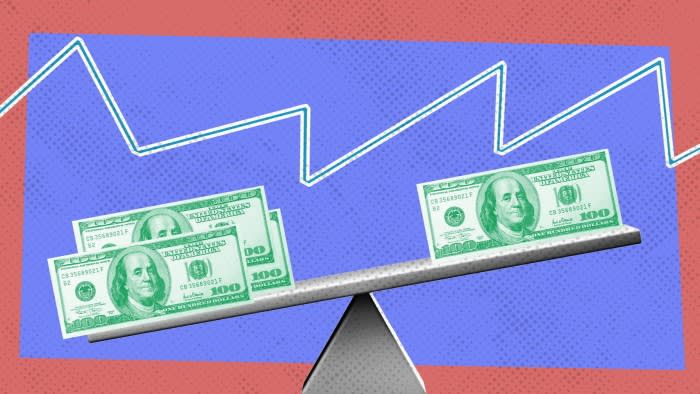Unlock the Editor’s Digest for free
Roula Khalaf, Editor of the FT, selects her favourite stories in this weekly newsletter.
The writer is co-founder and co-chair of Oaktree Capital Management and author of ‘Mastering the Market Cycle: Getting the Odds on Your Side’
No one used the phrase ‘‘asset allocation’’ when I joined the investment management industry 55 years ago. Structuring portfolios was a simple matter, generally following the classic “60/40” split between stocks and bonds.
Today, investors are presented with so many choices that the subject of asset allocation is very prominent, with investment companies and their institutional investor clients dedicating whole departments to determining how to weight various asset classes in a portfolio.
While ruminating on the utility of credit within an investment portfolio, I reached the conclusion that there are only really two asset classes: ownership and debt. If someone wants to participate financially in a business, the essential choice is between owning part of it and making a loan to it.
I have always felt that most investors do not fully grasp the essential difference between ownership and lending. In fact, they have nothing in common. Owners put their money at risk with no guarantee of a return; they merely expect to share in the residual cash flows and enterprise value from a business. Lenders, on the other hand, finance owners’ activities in exchange for contractual promises of periodic interest and the repayment of principal at the end, meaning the resulting return is known in advance, assuming the borrower makes the payments as promised.
In my opinion, one decision in the portfolio management process matters more than — and should set the basis for — all the other decisions. It is the selection of a targeted “risk posture”. Essentially, this is a question of the emphasis one puts on preserving capital (often achieved through debt investments) versus growing it (often achieved through ownership investments).
Many people think the proper goal in investing is achieving the highest return. Others understand that the goal should instead be to achieve the best relationship between return and risk. That is where investing in debt — our core focus at Oaktree — can come in.
Ownership assets typically have higher expected returns, greater upside potential and greater downside risk. Everything else being equal, the expected returns from debt are likely to be lower but fall within a much tighter range. In blending the two in a portfolio, tilting the balance towards ownership assets means increasing both the expected return and the expected risk. Importantly, as risk increases, not only does the expected return rise, but generally the range of possible outcomes becomes wider and the bad outcomes become worse.
Which of the two is “better”, ownership or debt? We cannot say. In an efficient market, it is just a trade-off. A higher expected return with further upside potential versus the cost of greater uncertainty, volatility and downside risk? Or a more dependable but lower expected return, entailing less upside and less downside? The choice between the two is subjective, largely a function of the investor’s circumstances and attitude towards bearing risk.
Since expected risk and return are assumed to increase proportionally in an efficient market, no position on the risk continuum is “better” than any other. It is all just a matter of where you want to come out in terms of absolute riskiness, or what absolute level of return you want to aim for.
Now, I must assert that, in reality, markets are not efficient in the academic sense of always being “right”. Markets may do an efficient job of rapidly discounting new information and accurately reflecting the resulting consensus opinion concerning the right price for each asset. But that opinion can be far from correct. For that reason, it is sometimes the case that gains can be achieved by choosing skilfully among the options: some asset classes can offer a better risk/return bargain than others, and some managers can operate within a market or strategy to produce superior risk-adjusted returns.
Moving on to the real world, I note that following a sea change in interest rates, non-investment grade public and private debt now offer prospective returns that are competitive to those historically seen on equities. I believe investors should consider shifting capital to this area if they are (a) attracted by returns of 7 to 10 per cent or so, (b) desirous of limiting uncertainty and volatility, and (c) willing to forgo upside potential beyond today’s yields to do so. For me, that should include a lot of investors, even if not everyone.
https://www.ft.com/content/15998397-48dc-4afd-acbb-19ff08416e5b


